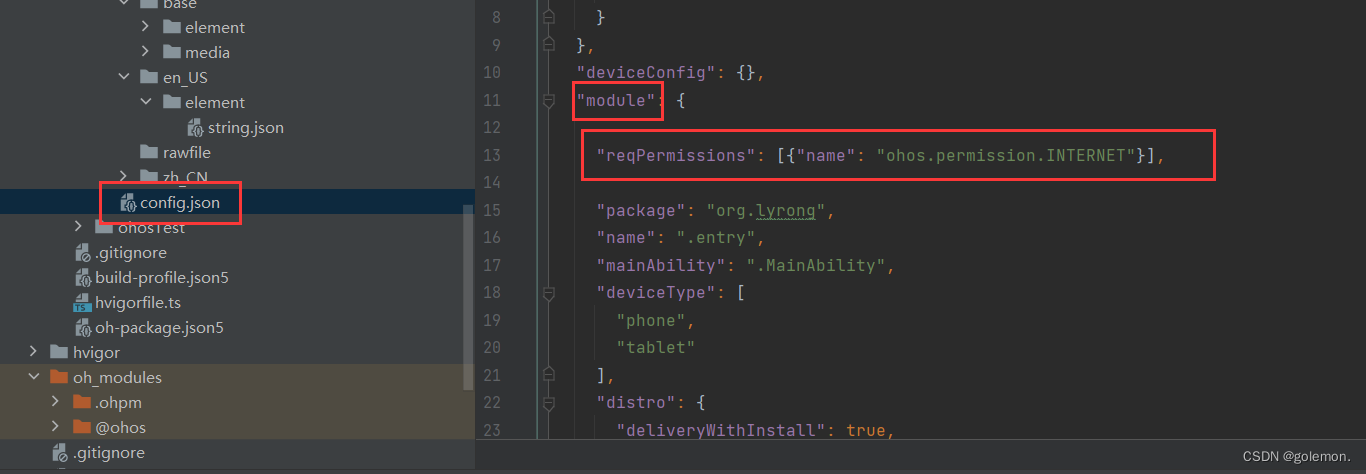首先,在鸿蒙项目下config.json中找到module项,在里面填写"reqPermissions": [{"name": "ohos.permission.INTERNET"}]

在页面对应js文件内,填写import fetch from '@system.fetch';。
GET和POST区别
GET将表单数据以key=value形式,多个kv则用&相连,并添加到所指定的url后面。
例如:
http://localhost:8080/login/name=glm&password=mlg
POST不会显示kv内容,更加安全。
例如:
http://localhost:8080/login
同时,GET请求用来从服务器获得资源,POST用来向服务器提交数据。
GET请求
fetch.fetch({url: 'http://localhost:8080/login', //服务的地址data:formData.value, //可有可无,提交的数据,与表单中name属性值相同method:"GET",header: {'Content-Type': 'application/json'},success:(res) => {console.info("login:"+res.data);console.info(JSON.parse(res.data))if(JSON.parse(res.data).name != null){ //登录成功,res.data是json数据// console.info("dkjfkjdf")router.replaceUrl({url:"pages/main/index",params:JSON.parse(res.data)})}else{//登录失败进行提示promptAction.showToast({message:"账号或密码输入错误!",duration:5000})}}});
POST请求
fetch.fetch({url: 'http://localhost:8080/login', //服务的地址data:formData.value, //可有可无,提交的数据method:"POST",header: {'Content-Type': 'application/json'},success:(res) => {console.info("login:"+res.data);console.info(JSON.parse(res.data))if(JSON.parse(res.data).name != null){ //登录成功,res.data是json数据// console.info("dkjfkjdf")router.replaceUrl({url:"pages/main/index",params:JSON.parse(res.data)})}else{//登录失败进行提示promptAction.showToast({message:"账号或密码输入错误!",duration:5000})}}});
strings设置
可以在i18n目录下的json文件中添加一个url字符串:
{"strings": {"hello": "Hello","world": "World","url": "http://localhost:8080/prj/"},"Files": {}
}
那么GET和POST请求中的url可以写为:
url: this.$t("strings.url")+'cleaner/login', //服务的地址
fetch.fetch({url: this.$t("strings.url")+'login', //服务的地址data:formData.value, //可有可无,提交的数据method:"POST",header: {'Content-Type': 'application/json'},success:(res) => {console.info("login:"+res.data);console.info(JSON.parse(res.data))if(JSON.parse(res.data).name != null){ //登录成功,res.data是json数据// console.info("dkjfkjdf")router.replaceUrl({url:"pages/main/index",params:JSON.parse(res.data)})}else{//登录失败进行Toast提示promptAction.showToast({message:"账号或密码输入错误!",duration:5000})}}});
前端交互之“get与post请求的区别”_前端get和post请求的区别-CSDN博客





 -- 第四部分(其他设计模式))













